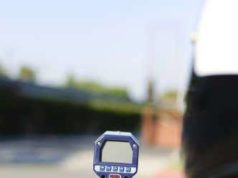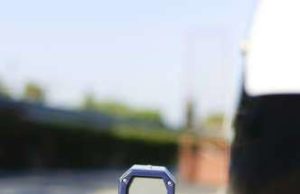
A Vehicle Identification Number, more often referred to as a VIN, is a serial number which is used by the automotive industry in order to uniquely identify individual motor vehicles. More recently issued VINs are issued to vehicles as 17 digit serials. Not only can a VIN describe a vehicle’s heritage and uniqueness, a VIN can also be used to help track warranty claims, registrations, insurance coverage, thefts and recalls. Each specific character of a VIN has a very specific purpose. A VIN decoder can be used to understand all the information that is within a VIN
Types of VIN
VINs are found in all vehicles, but they may be standardized differently based on the vehicle. VIN decoders can be used for any of these types:
• ISO Standard 3779: Used mostly Europe, but also other parts of the world
• FMVSS 115, Section 565: Used in both United States and Canada
• ADR 61/2: used only in Australia, looking back at ISO 3779 and 3780.
• SAE J853: Quite similar to the ISO standard
Finding the VIN Before using a VIN decoder
Before using a VIN decoder, you must first be able to find it. The VIN of a vehicle can usually be found by looking at the vehicle’s dashboard on the driver side or the driver’s side door post. If you are unable to find the VIN there, you can check:
• Firewall of the vehicle
• Left hand inner wheel arch
• Radiator support bracket
• Machined pad on front of engine
• Steering column
• Dash by windshield
• Passenger or driver side door or post
• Guarantee & Maintenance Book or other vehicle book
The most typical locations to find a VIN for later model vehicles are:
• Drivers door or post
• Left instrumentation/dash plate by window
• Firewall
VIN Decoder: Breaking Down a VIN
Modern VIN serials are based on two different standards, originally set by the International Organization for Standardization in 1979 and 1980. These are ISO 3779 and ISO 3780, respectively. Since then, different but compatible application of these ISO standards have been created and used by the United States as well as the European Union. The following are the sections of a VIN, based on standard:
• ISO 3770
o World Manufacturer Identifier (characters 1-3)
o VDS (characters 4-9)
o VIS (characters 10-17)
• More than 500 vehicles/year in European Union and North America
o World Manufacturer Identifier (characters 1-3)
o Vehicle attributes (characters 4-8)
o Check Digit (character 9)
o Model year (character 10)
o Plant code (character 11)
o Sequential number (character 12-17)
• Less than 500 vehicles/year in European Union and North America
o World Manufacturer Identifier (characters 1-3)
o Vehicle attributes (characters 4-8)
o Check Digit (character 9)
o Model year (character 10)
o Plant code (character 11)
o Manufacturer Identifier (character 12-14)
o Sequential number (character 15-17)
In this case, we will be using a VIN decoder for the European Union and North American standard for models that have over 500 vehicles produced each year.
Figuring out the Vehicle Make with a VIN Decoder
The first step in using a VIN decoder is to determine the make of the vehicle. The make of the vehicle is determined by the first three digits of the VIN, which is the World Manufacturer Identifier. The very first digit will allow a VIN decoder to tell you the country where the vehicle was manufactured. While there are many more country codes used for VIN decoders, some of the more common ones include the following:
• USA: 1, 4 or 5
• Canada: 2
• Mexico: 3
• Australia: 6
• Brazil: 9
• Japan: J
• Korea: K
• England: S
• France: V
• Germany: W
• Sweden: Y
• Italy: Z
The second and third digit can help you determine the specific manufacturer. As mentioned, together these are the World Manufacturer Identifier. Some more common ones that are used in VIN decoders in the United States include the following:
• 1F(A,D,C,D,M,T): Ford Motor Company
• 1F(U/V): Freightliner
• 1F9: FWD Corp.
• 1G: General Motors USA
• 1GC: Chevrolet Truck USA
• 1GT: GMC Truck USA
• 1G1: Chevrolet USA
• 1G2: Pontiac USA
• 1G3: Oldsmobile USA
• 1G4: Buick USA
• 1G6: Cadillac USA
• 1GM: Pontiac USA
• 1G8: Saturn USA
• 1H: Honda USA
• 1HD: Harley-Davidson
• 1J4: Jeep
• 1L: Lincoln USA
• 1ME: Mercury USA
• 1M(1-4): Mack Truck USA
• 1N: Nissan USA
• 1NX: NUMMI USA
• 1P3: Plymouth USA
• 1R9: Roadrunner Hay Squeeze USA
• 1VW: Volkswagen USA
• 1XK: Kenworth USA
• 1XP: Peterbilt USA
• 1YV: Mazda USA (AutoAlliance International)
• 4F: Mazda USA
• 4M: Mercury
• 4S: Subaru-Isuzu Automotive
• 4T: Toyota
• 4US: BMW USA
• 4UZ: Frt-Thomas Bus
• 4V(1-6,L,M,Z): Volvo
• 5F: Honda USA-Alabama
• 5L: Lincoln
• 5N1: Nissan USA
• 5NP: Hyundai USA
• 5T: Toyota USA – trucks
Features of a Vehicle with a VIN Decoder
The next five digits of a VIN are used to determine the features of a vehicle or the vehicle attributes. For this section, you must have the manufacturer’s specific explanations of these characters and what they stand for. You can find specific codes for different manufacturers such as Chrysler, Ford, GM, Ferrari, Hyundai, Mercedes-Benz, Volvo, Land Rover, Subaru, Honda, Mitsubishi, Lamborghini, Maserati, and Toyota.
Understanding the Check Digit with a VIN Decoder
One of the most helpful things about a VIN decoder is that it easily helps explain the check digit. Many companies use the ninth digit of a VIN, always a number, as the VIN’s check digit. By using a complex mathematical equation, you can determine whether the product of multiplying all the letters and numbers besides the check digit of the VIN, when divided by 11, has a remainder that is equal to the check digit. If this calculation shows that it does, VIN is most likely real. This process is not guaranteed only because there is always a 1/11 that two different VINs will have the same check number.
Figuring Out the Model Year with a VIN Decoder
After 1980, different countries have used slightly different variations of model years on a VIN. However, there is an accepted format that the majority of manufacturers use for the tenth digit. If the vehicle was built between the years 2001 and 2009, the digit from 0-9 corresponding to the vehicle will show up. For example, 7 would indicate a 2007 model.
If the vehicle was built somewhere between 1980 and 2000, the code will be the letter from A to Y, excluding the three letters (I,O, Q) that are not found in VINs.
Model Production Sequence with a VIN Decoder
The last six digits can be decoded with a VIN decoder to indicate just how far along into a specific production run that the motor vehicle was built. Since many companies make a lot of their respective vehicle models, this sequence is not necessarily a number.
For many car owners, this sequence is not very significant. However, for special models, such as limited edition vehicles or end-of-production vehicles, this sequence can be the most effective way to determine if a vehicle is authentic.






















